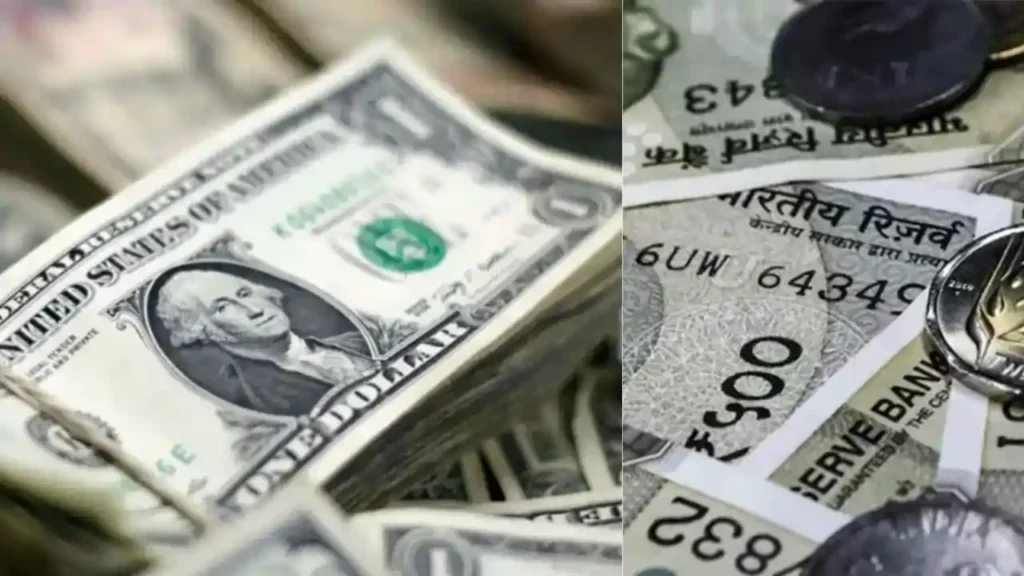New Delhi: India’s external debt has seen a significant uptick, reaching $736.3 billion by the end of March 2025, according to the latest data released by the Reserve Bank of India (RBI). This represents a 10% year-on-year increase, or $67.5 billion, from $668.8 billion in March 2024. The rise has pushed the external debt-to-GDP ratio to 19.1% in FY25, up from 18.5% in FY24, raising concerns about macroeconomic stability amid global financial pressures and currency valuation effects.

Key Highlights of India’s External Debt in FY25
The RBI’s comprehensive report provides a granular view of India’s external debt, highlighting its growth, structure, and potential risks. Below are the key takeaways:
- Total External Debt (March 2025): $736.3 billion
- Previous Year (March 2024): $668.8 billion
- Year-on-Year Increase: $67.5 billion (10%)
- External Debt-to-GDP Ratio: Rose from 18.5% in FY24 to 19.1% in FY25
- Valuation Effect: The appreciation of the US dollar against the Indian rupee contributed a $5.3 billion valuation impact. Excluding this effect, the debt increase would have been $72.9 billion.
- Long-Term Debt: Stood at $601.9 billion, up by $60.6 billion from the previous year, accounting for over 80% of total liabilities.
- Short-Term Debt Share: Declined marginally to 18.3% of total debt from 19.1% in FY24. However, short-term debt as a percentage of foreign exchange reserves rose to 20.1% from 19.7%.
- Debt Service: Principal repayments and interest payments saw a marginal decline of 0.1%.
What is External Debt?
External debt refers to funds borrowed by a country from foreign sources, including foreign commercial banks, international financial institutions such as the International Monetary Fund (IMF) and World Bank, and foreign governments. These borrowings are often denominated in foreign currencies, making them susceptible to exchange rate fluctuations, which can significantly impact repayment costs.
Debt Composition by Borrower
The RBI report breaks down the external debt by borrower type, highlighting the key sectors driving the increase:
- Non-Financial Corporations (excluding the central bank): Held the largest share at 35.5%, amounting to $261.7 billion. This reflects the growing reliance of Indian companies on international borrowing to fund operations and expansion.
- Deposit-Taking Corporations (excluding RBI): Accounted for 27.5% of the debt, totaling $202.1 billion. This includes banks and other financial institutions tapping global markets for funds.
- General Government: Contributed 22.9% to the total debt, equivalent to $168.4 billion, driven by public sector borrowing for developmental projects and fiscal needs.
Debt by Currency Denomination
The currency composition of India’s external debt underscores the dominance of the US dollar, which continues to shape the country’s repayment obligations:
- US Dollar: The largest component at 54.2%, reflecting the global reliance on the dollar for international transactions.
- Indian Rupee: Accounted for 31.1%, offering some insulation from currency fluctuations.
- Japanese Yen: Comprised 6.2%, often tied to loans from Japanese institutions for infrastructure projects.
- Special Drawing Rights (SDRs): Made up 4.6%, primarily linked to IMF borrowings.
- Euro: Constituted 3.2%, indicating a smaller but notable share of European currency-denominated debt.
Debt by Instrument Type
The RBI data also categorizes external debt by instrument type, providing insight into the nature of borrowings:
- Loans: The largest component at 34%, driven by corporate and government borrowing from international lenders.
- Currency and Deposits: Accounted for 22.8%, reflecting funds held in foreign banks.
- Trade Credit and Advances: Comprised 17.8%, tied to short-term financing for trade activities.
- Debt Securities: Made up 17.7%, including bonds and other marketable instruments issued in international markets.
Maturity Profile: Long-Term vs. Short-Term Debt
The maturity structure of India’s external debt is a critical factor in assessing repayment risks:
- Long-Term Debt (maturity > 1 year): Increased to $601.9 billion, up by $60.6 billion from FY24, constituting over 80% of total liabilities. This reflects a preference for longer-term financing, which provides greater repayment flexibility but increases overall debt levels.
- Short-Term Debt (maturity ≤ 1 year): Its share in total debt fell marginally to 18.3% from 19.1%, indicating a slight shift toward longer-term borrowing. However, the short-term debt-to-foreign exchange reserves ratio rose to 20.1% from 19.7%, signaling a relative weakening of reserves against short-term obligations.
Economic Implications of Rising External Debt
The surge in India’s external debt, coupled with a higher debt-to-GDP ratio, raises several macroeconomic concerns:
- Repayment Burden Due to Exchange Rate Fluctuations
As a significant portion of India’s external debt is denominated in foreign currencies (notably the US dollar at 54.2%), the appreciation of the dollar against the Indian rupee increases repayment costs. The RBI noted a $5.3 billion valuation effect due to this factor, underscoring the vulnerability of India’s debt to global currency movements. - Impact of Rising Inflation
Prolonged inflation tends to push up interest rates, slowing economic growth and elevating the debt-to-GDP ratio. The increase from 18.5% to 19.1% in FY25 highlights this trend, as higher borrowing costs strain fiscal resources. - Crowding Out Productive Investment
Higher debt servicing requirements limit the government’s ability to allocate funds to critical sectors such as infrastructure, healthcare, and education. This crowding-out effect could hinder long-term economic development and reduce India’s growth potential. - Balance of Payments Pressure
Persistent debt accumulation can widen the current account deficit, putting pressure on India’s balance of payments. A higher external debt-to-GDP ratio and a rising short-term debt-to-foreign exchange reserves ratio (20.1% in FY25) indicate potential risks to external sector stability.
Why Is This in the News?
The RBI’s report has garnered significant attention due to the 10% surge in external debt, which outpaces the $39.8 billion increase recorded in FY24. The rise in the debt-to-GDP ratio to 19.1% has sparked discussions about India’s fiscal health, especially in the context of global economic uncertainties, including US dollar appreciation and rising international borrowing costs. The detailed breakdown of debt by sector, currency, and maturity structure provides critical insights for policymakers, investors, and analysts monitoring India’s economic trajectory.
Comparative Analysis: FY24 vs. FY25
To contextualize the increase, India’s external debt grew by $39.7 billion in FY24, significantly lower than the $67.5 billion rise in FY25. The sharper increase in FY25 reflects heightened borrowing by non-financial corporations and the general government, coupled with the valuation effect of a stronger US dollar. The marginal decline in the share of short-term debt (from 19.1% to 18.3%) suggests a cautious approach to short-term liabilities, but the rise in the short-term debt-to-foreign exchange reserves ratio indicates a need for stronger reserve buffers.
Policy Implications and Outlook
The RBI’s data underscores the need for prudent debt management to mitigate risks associated with rising external borrowings. Key policy considerations include:
- Strengthening Foreign Exchange Reserves: With short-term debt accounting for 20.1% of forex reserves, bolstering reserves is critical to cushion against repayment pressures.
- Diversifying Currency Denominations: While the US dollar dominates at 54.2%, increasing the share of rupee-denominated debt (currently 31.1%) could reduce exposure to exchange rate risks.
- Promoting Fiscal Discipline: Containing the debt-to-GDP ratio requires balancing borrowing with investments in growth-oriented sectors to ensure sustainable economic expansion.
- Monitoring Global Financial Conditions: The appreciation of the US dollar and rising global interest rates necessitate proactive measures to manage borrowing costs and repayment schedules.
Conclusion
India’s external debt reaching $736.3 billion in FY25, as reported by the RBI, marks a significant milestone in the country’s financial landscape. The 10% increase from FY24, driven by long-term borrowings and currency valuation effects, has pushed the debt-to-GDP ratio to 19.1%, signaling potential challenges to macroeconomic stability. While long-term debt dominates at $601.9 billion, the slight decline in the share of short-term debt to 18.3% reflects a cautious approach to short-term liabilities. However, the rise in the short-term debt-to-foreign exchange reserves ratio to 20.1% highlights the need for robust reserve management.
The dominance of the US dollar (54.2%) in debt composition, coupled with the reliance on loans (34%) and non-financial corporations (35.5%) as key borrowers, underscores the complexities of India’s external debt profile. As the country navigates global financial challenges, including inflation and exchange rate fluctuations, policymakers must prioritize sustainable borrowing practices to safeguard economic growth and stability.
Frequently Asked Questions (FAQs)
1. What is India’s external debt, and why has it increased to $736.3 billion in FY25?
India’s external debt refers to funds borrowed from foreign sources, such as foreign commercial banks, international financial institutions like the IMF and World Bank, and foreign governments. As of March 2025, it reached $736.3 billion, a 10% increase ($67.5 billion) from $668.8 billion in March 2024, according to the Reserve Bank of India (RBI). The rise is driven by increased borrowing by non-financial corporations and the general government, alongside a $5.3 billion valuation effect due to the US dollar’s appreciation against the Indian rupee.
2. What is the external debt-to-GDP ratio, and why is its rise to 19.1% significant?
The external debt-to-GDP ratio measures a country’s external debt relative to its economic output. In FY25, India’s ratio rose from 18.5% in FY24 to 19.1%, indicating a higher debt burden relative to the economy’s size. This increase raises concerns about macroeconomic stability, as it suggests greater reliance on external borrowing and potential vulnerabilities to global financial conditions, such as rising interest rates and currency fluctuations.
3. How is India’s external debt structured by borrower and currency?
The debt is distributed across key borrowers: non-financial corporations hold the largest share at 35.5% ($261.7 billion), followed by deposit-taking corporations (27.5%, $202.1 billion) and the general government (22.9%, $168.4 billion). By currency, the US dollar dominates at 54.2%, followed by the Indian rupee (31.1%), Japanese yen (6.2%), Special Drawing Rights (SDRs) (4.6%), and the euro (3.2%).
4. What is the difference between long-term and short-term debt in India’s external debt profile?
Long-term debt (maturity over one year) constitutes $601.9 billion, or over 80% of the total, and grew by $60.6 billion in FY25. Short-term debt (maturity one year or less) accounts for 18.3% of the total, down slightly from 19.1% in FY24. However, short-term debt as a percentage of foreign exchange reserves rose to 20.1% from 19.7%, signaling increased repayment pressure relative to reserves.
5. What are the economic implications of India’s rising external debt?
The rise in external debt poses several risks:
- Exchange Rate Risks: With 54.2% of debt in US dollars, rupee depreciation increases repayment costs.
- Inflation and Interest Rates: Prolonged inflation raises borrowing costs, potentially slowing growth and increasing the debt-to-GDP ratio.
- Crowding Out Investment: Higher debt servicing limits government spending on infrastructure, health, and education.
Balance of Payments Pressure: Persistent debt accumulation may widen the current account deficit, threatening external sector stability.

